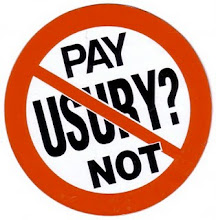J.S.G. Boggs - The Art of Money
That was the start of JSG Bogg’s weird tale of "economic" art and later on, legal troubles. Boggs began "spending" his very own bills for face value - he would draw an elaborate note denominated $10 in exchange for $10 worth of goods.
Soon after, no doubt in part because of the high quality of illustrations, Boggs notes became very collectible - however, Boggs refused to sell his notes directly to collectors. He preferred to exchange his money for goods, at restaurants, bars and shops, and then tell the collectors where to hunt for the Bogg notes. In a way, Boggs likened his economic transaction as a performance art.
Boggs made his own versions of US as well as other countries’ banknotes - although instantly recognizable as "funny money" (one of his most famous notes was created for the Florida United Numismatist convention shown above, complete with "IN FUN WE TRUST"), Boggs were repeatedly arrested for counterfeiting in the USA and abroad.
“Boggs Bills” typically feature the same size, coloration, design patterns, and symbols as the bills he is inspired by, but with a few noticeable variations usually aimed at comedic effect. There is no evidence that he has ever attempted to pass his bills off as authentic currency, or that his “bills” have been mistaken for the real thing.
Nonetheless, in 1991, U.S. Secret Service agents seized 15 of Boggs’ pieces from an exhibit in Cheyenne, Wyoming. The following year, Secret Service agents seized the majority of Boggs’ remaining work from his studio, home, and office at Carnegie Mellon University. In neither instance, however, was Boggs charged with counterfeiting. In 1993, Boggs sued for the return of his work, claiming the seizure of his work violated his First Amendment right of free speech. He argued the counterfeiting statute was written too broadly, allowing law enforcement officials to apply it to works never mistaken for actual currency. His legal efforts were unsuccessful. Both trial and appellate courts upheld the seizure of Boggs' work, finding that the federal statute served the government interest of preventing counterfeiting without unduly restricting free expression. To this day Boggs has never been charged with counterfeiting, yet his work remains in the possession of the Secret Service.
J.S.G. Boggs has spent over $250,000 in hand-drawn variations on the local currency wherever he is based. After eating a meal, selecting an item, or receiving a service, he attempts to exchange his hand-made bills for goods and services that he wishes to purchase. Each transaction requires the recipient to consider whether his art is desirable enough to replace the money that they may then have to spend out of their own pocket in order to acquire Boggs’ work. There is a further component to the transaction when collectors of Boggs’ work have to personally negotiate with the owners of the bills in order to acquire his pieces. If someone buys this work outright, Boggs also includes the change he gets back, his purchase receipt and other ephemera from the transaction.
Though there is always a clear disclosure that he is exchanging art for goods and services, Boggs has repeatedly been arrested for counterfeiting in the USA and abroad. The U.S. Secret Service has raided his home and confiscated much of his artwork but he has never been formally charged.
Although the United States Treasury Department has very strict and serious laws about the counterfeiting of currency, there is one law that is above them that they seem to recognize and that is the artists freedom of expression.
James Stephen George (J.S.G.) (born Steve Litzner) is most famous for his hand drawn, one-sided United States bills that he then exchanges for goods and services just like real money. His drawings show the hand of a master draftsman so much so that he has been arrested for his counterfeiting in England and Australia. Boggs was acquitted in both cases on the grounds that he was creating art and not forging or counterfeiting currency and trying to pass it off as such.
But Boggs’ creations are as elusive as his philosophy about the art he creates. He does not consider the drawn bank notes as money and they are commonly referred to as Boggs Notes, Boggs Bills, and Boggs Dollars. Boggs considers the art part of his work when he exchanges the bills, receives change, and receipt and goods. He then is willing to sell the receipt, change and goods as the art, not the original bill. If a collector wants a hand drawn Boggs Bill they will have to track down the lucky recipient themselves.
While Boggs art work could be considered hard to collect and esoteric he is taken seriously by the art world. The proof? His work is in the collections of the British Museum, the Art Institute of Chicago, the Museum of Modern Art, and the Smithsonian Institution." (snip) ...
NOTE: Read an interview and watch a video where this story is originally published at this website:
http://localcurrencycouncil.org/index.php/resources/features--articles-research-a-concepts/boggs-the-art-of-making-your-own-money



0 Comments:
Post a Comment
<< Home